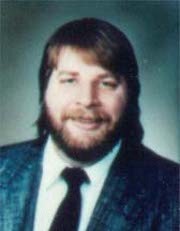Collaboratory for Medical Innovation and Implementation
The Collaboratory for Medical Innovation and Implementation has been launched to achieve excellence in research and education with collaboration between faculty in College of Medicine (COM), the College of Nursing (CON) and the College of Engineering and Applied Science (CEAS). The Callboaratory consists of members of the Mechanical Engineering, Mechanical Engineering Technology, Biomedical Engineering, Aerospace Engineering, Computer Engineering and Computer Science Programs.
Projects
Dynamic Model of the Middle Ear Ossicular Chain
This project focused on designing and developing a prototype of middle ear ossicular chain based on the research carried out by Dr. Ravi Samy, Assistant Professor of Otolaryngology Pediatric and Adult Otology/Neurotology at the University of Cincinnati Medical School. Dr. Samy’s research showed the ability to understand the properties and behavior of the different components and tissues of the middle ear ossicular chain. The engineering team, comprising Mechanical Engineering seniors Brain Kim, Brian Kunes, Matt Schnuth, and Andy Ward under supervision of engineering faculty members, produced this prototype as a Senior Design Project in which they completed an iterative process of design and construction of this twenty times size model. Testing was performed on the model using a wave generator and a triaxial accelerometer. The results based on this research project was published at 2011 ASME Conference on Frontier in Biomedical Devices and has been well received both within (including publications in College of Engineering Applied Science’s research magazine) and outside the UC’s research community.
Superbug Fuel Cell
This project was based on the research on genetically altered super-bug bacteria carried out by Pilus Energy and Dr. Dan Hassett at the University of Cincinnati College of Medicine. His research showed the ability of aerobic super-bug bacteria to generate electricity in a controlled environment using organic waste matter. The overall objective of the research is to be able take all waste water and all sanitation waste from the house and run it through a small version of a tertiary treatment plant-similar to what is used on the Space Station. The plant would recycle the water for all use except drinking and would produce natural gas from the anaerobic bacteria digestion and electricity from the superbug that Pilus Energy is promoting as part of the fuel cell project. The superbug would be part of the aerobic processing part of the plant.
The purpose of the Senior Design Project was to design and construct two large scale fuel cells to generate electricity from waste water. The Senior Design Team was composed of Bobby Duncan, Tyler Janzen, Eric Lindhurst and Will Morton, Mechanical Engineering students at the University of Cincinnati. The team designed and constructed a stainless steel based fuel cell and a crushed graphite based fuel cell. Both cells were tested with a bacteria growth media and provided excellent voltage results that had not been seen in earlier attempts to prototype the design of such fuel cells.
Human Fall Detection using Vision Sensors
This is an ongoing project which focuses on developing a non-invasive sensor based fall detection system to address the growing concerns for developing a smart home system for the care of elderly. This work is part of an innovative paradigm of research aimed at a synergistic exploitation of distributed devices via techniques that are at the intersection of data mining, inferencing and learning, and distributed decision making for developing a co-robotics based solution for personalized care for elderly with cognitive impairment. The initial part of this work, involves the implementation of a human motion tracking system for monitoring the activities of one person using the Microsoft Kinect sensor. The human gait information obtained thus would be used to determine fall by matching the gait patterns with that of the patterns associated with the fall. The overall objectives of this work are directed towards realizing the larger goal of developing a robust system for fall detection for the elderly with measures in place against false detections.
Brief History
The Collaboratory for Medical Innovation and Implementation has been launched to achieve excellence in research and education with collaboration between faculty in the College of Medicine (COM), the College of Nursing (CON) and the College of Engineering & Applied Science (CEAS). The Collaboratory consists of faculty members of the Mechanical Engineering, Mechanical Engineering Technology, Biomedical Engineering, Aerospace Engineering, Computer Engineering and Computer Science Programs. The Center for Robotics Research has been conducting design and prototyping projects for COM and CON utilizing its expertise in intelligent control and robotics since 2010.
The Objective of CMII
The objective of this new initiative is two-fold:
- With this new initiative, anyone who is an idea generator can turn a concept into an actual hardware or software solution. For example a COM faculty could provide a description of a need or problem to utilize the expertise of the faculty members and students in the Collaboratory.
- As a result of this new initiative, CMII will provide a solution in the form of a prototype, with all the necessary hardware and software. Using the above example, this has the double benefit of not only meeting the need or solving the problem for the COM faculty but also serving as training and hands-on experience for engineering students.
How can we work with you?
Highly motivated engineering students with outstanding intellectual capabilities will be selected and mentored by a team of engineering faculty in the Collaboratory. A typical project will be identified and developed by CMII. The project will then be assigned to engineering faculty, which will be paired with graduate and undergraduate students based on their background and interest. These students will work closely with the faculty members to carry out these projects.
Examples of projects can be a design that needs to be prototyped, an idea that needs to be turned into an engineering design, implementation of a software program, or control of a hardware device. If you have such needs, faculty members at the Collaboratory will work with you to evaluate the project scope, complexity, and duration, identify students suitable for the project, and estimate funding necessary (provided by the project sponsor) for completing the project.
Locations
Collaboratory for Medical Innovation and Implementation (CDS Lab)
414 Old Chemistry
University of Cincinnati
Cincinnati, OH 45221
IMAGE Lab
517a Old Chemistry Building
University of Cincinnati
Cincinnati, OH 45221
Center for Robotics Research
551 Baldwin Hall
University of Cincinnati
Cincinnati, OH 45221
Faculty
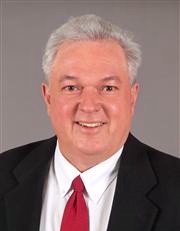
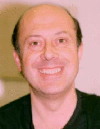
Dan Ralescu
Professor, A&S Mathematical Sciences
4506 French Hall
1976-77 Assistant Professor, Department of Economics and Management,University of Dijon, France
Joined University of Cincinnati in 1980
On the Editorial Board of 10 professional journals
Frequent lectures, and plenary talks at international conferences (France,Spain,Japan,China,Brazil,etc.).
Fellow of IFSA (International Fuzzy Systems Association)
President of ICUT (International Consortium of Uncertainty Theory)
Lifetime Achievement Award from Society for Uncertainty of China, August 2014
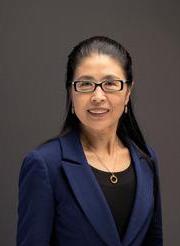
Janet Jiaxiang Dong
Professor, CEAS - Mechanical Eng Tech
494 Rhodes Hall
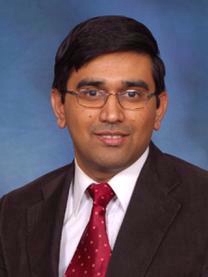
Manish Kumar
Professor, CEAS - Mechanical Eng
629 Rhodes Hall
UAV MASTER Lab
Dr. Manish Kumar directs Cooperative Distributed Systems (CDS) Laboratory, Collaboratory for Medical Innovation and Implementation, and co-directs UAV MASTER Lab. His research interests include Unmanned Aerial Vehicles, robotics, decision-making and control in complex systems, multi-sensor data fusion, swarm systems, and multiple robot coordination and control. His research has been supported by funding obtained from National Science Foundation, Department of Defense, Ohio Department of Transportation, Ohio Department of Higher Education, and several industry. He is a member of the American Society of Mechanical Engineers (ASME). He has served as the Chair of the Robotics Technical Committee of the ASME’s Dynamic Systems and Control Division, and as an Associate Editor of the ASME Journal of Dynamic Systems, Measurements and Control.
